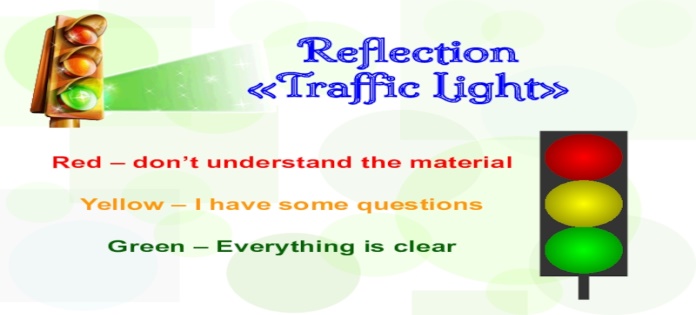|
Beginning of the
lesson
Warming-up
3
min.
Pre-learning
«Brainstorming»
method
7 min.
|
Organization moment
:
1.Greeting.
Ask about the
weather.
The teacher sets the lesson
objectives, letting students know what to anticipate from the
lesson.
Warming
up
What is the weather
like today?
What season is it
now?
What day of the week
today?
Lead –
In:
-What do you see in the
picture?
-What do you eat for
breakfast?
-What do Kazakh and English people eat for
breakfast?

|
The aim:
To develop pupils speaking skills and create
friendly atmosphere
Learners remember previous
lesson vocabulary
Students say different words from the
picture
Learners answer the
questions
|
The teacher to assess learners for
their ability.
“Good job!
Well done!”
Formative
Assessment

Good job!
Descriptor:
- answer the question.
Total: 2point
|
Picture
|
|
Middle of the lesson
Presentation part.
30
min
|
Ex:1
P:94
•Refer Ss to the first and last sentences
in the dialogue and elicit Ss’ guesses as to what the dialogue is
about.
•
Play the recording. Ss listen and read the
text and find out.
Ex: 2 P:
94
•
Read out the phrases. Refer Ss back to the
dialogue and elicit which of the underlined phrases are synonymous
with each one from various Ss around the class.
Differentiation:
«Verbal support» method is used to help Ss use new words in the
sentences.
Ex: 3 P:
94
•
Explain the situation and ask Ss to read
the menu.
•
Remind Ss that they can use the dialogue
in Ex. 1 as a model as well as any ideas of their own to complete
the task.
•
Ss complete the task in pairs. To help Ss,
draw the following diagram on the board and elicit appropriate
phrases Ss should use. Write them on the board. Ss can refer to the
diagram while doing the task.
Ex: 4 P:
94
•
Play the recording with pauses for Ss to
repeat chorally and/or individually.
•
Check Ss’ intonation.
Conclusion during the lesson some tasks differentiated by
outcomes of the students and by their
abilities.
|
• Learners read the first and the last exchange in
the dialogue. Answer the question.
ANSWERS
The
dialogue is about someone who is ordering breakfast.
•
Learners match the underlined phrases in the
dialogue with the ones from the list below.
ANSWERS
Is
it too late to order breakfast? = Are you still serving
breakfast?
I’d
prefer something lighter. = I don’t want to eat a heavy
meal
What
would you like to drink? = What about a beverage? Can I get you
anything else? = Would you like anything else?
I’ll
bring you your order in a moment. = Your meal will be ready
soon.
• Learners look at the menu. In pairs, act out a
dialogue similar to the one in Ex. 1.
ANSWERS
A:
Good morning. What can I get you?
B:
Hi. Are you still serving breakfast?
A:
Yes, we serve breakfast until noon. And we’ve got a special offer
today – our full English is £6.
B:
Oh. Can I have the full English, then
please?
A:
Yes, of course. What would you like to drink? B: I’d like tea,
please.
A:
Can I get you anything else?
B:
No, thanks.
A:
OK. Your meal will be ready soon.
B:
Thanks.
•
Learners listen and repeat.
ANSWERS
Student’s own
answer. .
|
Descriptor:
- read the first
- answer the question.
Total: 2point

Self
assessment
Descriptor:
- read out the phrases
- match the underlined
phrases
Total: 2 point
Descriptor:
- look at the menu.
- act out a
dialogue similar
Total: 2 point
Descriptor:
- listen and repeat.
Total: 2 point
|
Students book
|









